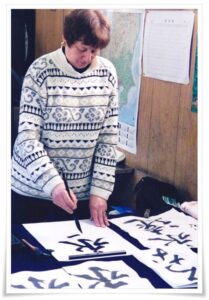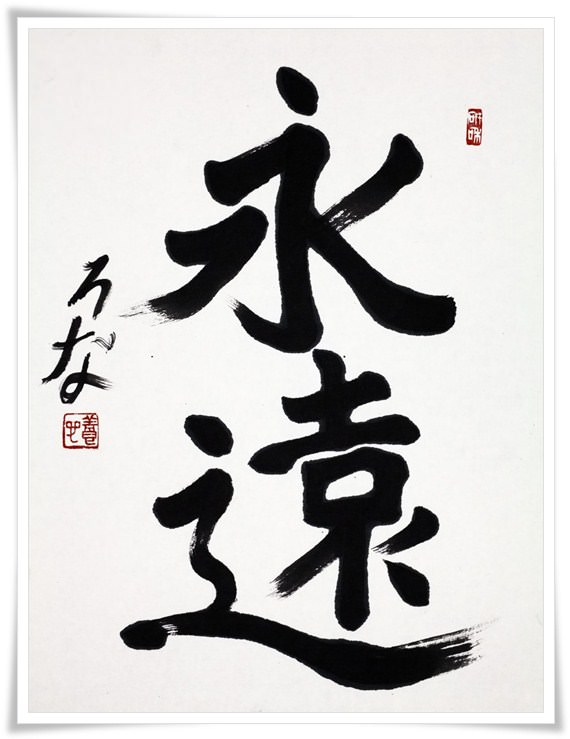WiK welcomes new member Rona Conti, known for her calligraphy. The passages below are extracted from a longer account, ‘Encounters with Brushes Part One‘.
About Rona Conti

Rona Conti is a painter and calligrapher whose artwork is represented in numerous public, private and corporate collections and museums in the United States and internationally. English editor for Beyond Calligraphy, in 1999, she began studying Japanese calligraphy with (Mieko) Kobayashi sensei of Gunma from whom she received her pen name (魂手恵奈). Invited to exhibit calligraphy at the Tokyo Metropolitan Museum of Art with the International Association of Calligraphers for the last five years, she received the “Work of Excellence” Prize three times. She was invited to demonstrate Japanese Calligraphy at the Boston Museum of Fine Arts in 2009. Her handmade paper artwork is produced in New York City at Dieu Donne Papermill.

***********************
Dreaming Japan eons before I ever set foot on its soil, from the time I was in college studying ceramics and painting I was mesmerized by Japanese scrolls, the essential black and white mysteriously beautiful forms brushed upon tactile surfaces, then mounted and hung in soft-lit rooms of museums. Envisioning Japan from books and objects, I dreamed of studying calligraphy in its proper setting.
The resumes of Japanese Calligraphy Masters usually start with the young age at which they began their studies, often with a relative. As a Western counterpart, I can only point to my parallel path, my taking up of a different kind of brush. The desired image of my five-year old self, painted with oils on an un-stretched canvas, somehow miraculously survived. It was painted at the studio of my aunt, Helen Jacobson, a fine painter and a beautiful woman. She was blond haired and blue-eyed, always elegantly dressed, I was brown and brown. Vividly remembering painting in her cavernous space where my imagination soared, I decided at that moment my future path. Wishing to be an artist ballerina when I “grew up”, the incongruity of painting in a tutu never occurred to me.
……….
Love and youth has a way of re-shaping dreams. Had I not found the former and not been the latter, I likely would have found a way to adventure to Japan at that time. Instead, I received a letter from Japan from my friend and advisor at Antioch College, Karen Shirley, a potter three years my senior, my “senpai”. “Be sure to come to Mashiko and see Japan before all of the wood burning climbing kilns are no longer allowed because of pollution.” It was 1964. I had graduated that May and was in Boston. I filed her advice away for later and set about pursuing my passion which began with brushes.
……………
Over the years, growing as an artist, the thought of the now rather distant past dream never left. While reveling in color and paint and later exploring work using handmade paper pulps, the vision of Japan continued to come front and center. Dividing the space, placement, the glory of the simplicity of Japanese calligraphy, eliminating the unnecessary and getting to the essence of the black and the white and in between seemed attainable at last. Seeking adventure, finding a way, I secured a job teaching English, sold my car, rented my apartment, told my two creative projects, now 28 and 23, to come and visit, and I departed for Japan. It was summer, 1998.
While I spoke no Japanese, while it took quite a lot of work to convince my bosses that I could teach and study, thanks to an adult student, I found a calligraphy Master willing to teach me. It was March of 1999, I had only three months left on my work visa.
The most precious moment held forever in memory was of holding a brush for the first time in Kobayashi Sensei’s studio, the long journey only just begun. It was the first, but definitely not the last time in Japan that quiet tears of joy would travel slowly down my cheeks. I was home.

